INTRODUCTION
The coronavirus disease 2019, known as COVID-19, started in Wuhan, Hubei Province, China in December 2019 and rapidly spread across China and subsequently to other countries. The World Health Organization (WHO) declared the disease to be a pandemic on March 11, 2020 [
1]. With most businesses fully or partially closed following government restrictions, the COVID-19 outbreak led to major disruptions to the global economy and a severe crisis in the tourism and hospitality industry [
2]. According to the latest UN World Tourism Organization (UNWTO) Barometer, the COVID-19 pandemic has had an extreme negative impact globally. For example, international tourist arrivals severely declined 74% in 2020, compared to the 2019 figures, which represents an assessed loss of USD 1.3 trillion in export revenue [
3]. The COVID-19 outbreak has had a significant negative impact on the food services industry in many countries.
COVID-19 has resulted in unexpected stress on the food services industry, creating a variety of immediate challenges. The fast spread of COVID-19 and the imposition of government restrictions have dramatically altered consumption patterns. The pandemic has led to a radical shift in consumer demand away from restaurants, food services, and other types of “food away from home” towards food consumed at home, necessitating important changes in the way food supply chains operate [
4]. As the COVID-19 pandemic gathered pace, sales of “food away from home” (consumed in hotels, restaurants, catering, and cafés) collapsed. According to the data of the OpenTable global network, restaurant reservations declined sharply in mid-March 2020 and fell to practically zero as lockdowns were enforced, as shown in
Fig. 1 [
45].
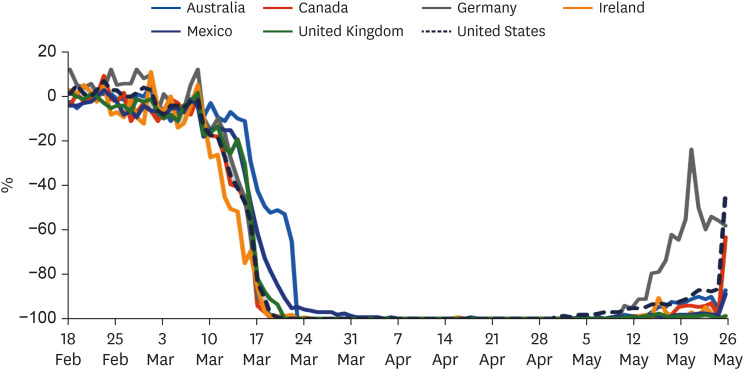 | Fig. 1
Restaurant reservations collapsed after COVID-19 globally.
Data includes online reservations, phone reservations, and walk-ins at restaurants on the OpenTable network; estimates are based on a sample of approximately 20000 restaurants. Percentage change in daily restaurant reservations compared to the previous year. Source: OpenTable.com.

|
Simultaneously retail demand for food dramatically increased, particularly sales of frozen and packaged foods soared after the COVID-19 outbreak in the United States, compared to the previous year (
Fig. 2).
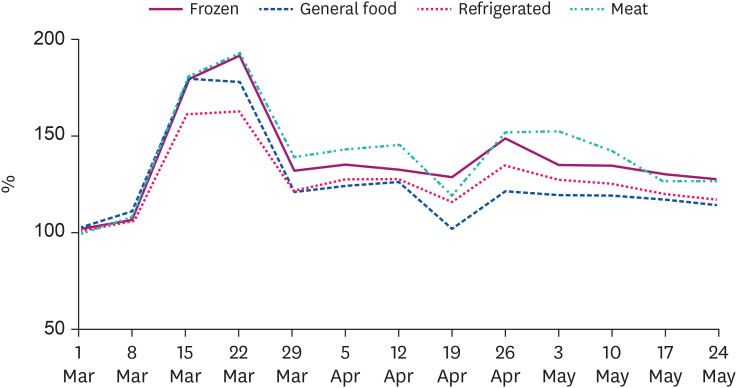 | Fig. 2
Retail food demand soared after COVID-19 in the United States.
CPG, consumer packaged goods.

|
Also, in the second half of March 2020, weekly sales of frozen foods were 63% higher than the year before in France, while sales of packaged foods were 56% higher than 2019 in Germany. Similar trends were observed in other countries too. Following this initial spike, the consumer demand for fresh, frozen, or packaged foods has been approximately 15% to 20% higher than usual [
6]. The COVID-19 pandemic has caused a significant consumer demand change. For instance, the “food away from home” category typically accounts for 33% of the consumption of protein foods, including among other items, meat, seafood, and eggs, 32% of vegetables, 31% of cereals, 25% of dairy, and 10% of fruits in the United States [
7].
In addition to the shift in consumer demand, COVID-19 has disrupted the food services industry, due to the social distancing rules and lockdown measures imposed to prevent the spread of the coronavirus. The food industry has also been subjected to supply-side shocks, including business closures, job loss, and labor shortages [
8]. For example, the food and beverages sector accounted for 60% of the jobs lost in March 2020 in the United States [
67]. Due to the disruption to the food services industry, significant attention has been focused on the industry's resilience [
89].
Many previous studies have investigated the media coverage of pandemics such as severe acute respiratory syndrome (SARS) and the Middle East respiratory syndrome (MERS) [
101112]. During a pandemic, communication of information to the affected populations is important. In particular, information from government and public health authorities is critical to decision-making by policymakers and practitioners and to taking actions to combat current diseases [
9]. For example, Americans seek and receive disparate information from various sources (
e.g., television, radio, newspapers, and social media); the US national news is perceived to be the most reliable information source among these [
13]. Accordingly, information from the national news can play an essential role in providing guidance to consumers and protecting public health as well as the food services businesses during the pandemic.
COVID-19 is the most disruptive international crisis dominating news media. Surprisingly, the United States and the United Kingdom have suffered severely from the COVID-19 pandemic and have experienced much higher infection and mortality rates compared to the other members of the G7 group of developed countries [
141516]. This severe crisis has reinforced the need for a reliable source that can provide information and educate the population [
16]. The COVID-19 pandemic has noticeably increased news consumption from mainstream media compared to online and social media [
17]. BBC News is the most widely watched information source in the United Kingdom [
17], and CNN and Fox News are the 2 largest US news outlets. This study, therefore, focused on these three news media groups. In this context, this paper explores the patterns of communication about food services on news media during the COVID-19 pandemic. Analyzing such data could help policymakers and practitioners in the food services industry to take into consideration public needs and concerns. Based on the findings, this current study suggests implications for the food services industry and policies that are relevant to the pandemic response.
Go to :

DISCUSSION
The COVID-19 pandemic has aroused great public attention and concern in every sector, including food services worldwide. This paper investigated the food services domain of influential news media (BBC, CNN, and Fox News) from March 2020 and February 2021 to acquire food services related information published during the COVID-19 crisis. Analyzing the data showed that the topics in food services that drew the attention of the mass media could be divided into three categories: food and health, policy, and lifestyle change. Topic modeling could provide an alternative and comprehensive perspective to examine the relationship between the COVID-19 outbreak and significant media reports in the food services field.
First, the findings indicate that the keywords related to the food and health category occurred more frequently than keywords related to the categories of policy and lifestyle change during the COVID-19 outbreak. Our results show that the mass media has produced and conveyed health safety and treatment information by paying attention to the COVID-19 infection, risks, social distancing, and government rules. This supports the previous research findings that the food services sector is very vulnerable and has been significantly harmed by the impact of the pandemic. Hence, safety information and preventive measures are critical to ensure food and health safety [
2021]. Therefore, food services providers and researchers should consider health and safety issues and take better precautionary measures to ensure the well-being of consumers and employees during/after the COVID-19 pandemic.
Additionally, the results show that the food delivery services topic was covered prominently. After the COVID-19 pandemic, the volume and types of takeaway or delivery foods have dramatically increased with the shutdown of restaurants and eating/drinking facilities [
22]. Also, the coronavirus has caused intense fear regarding the provision and receipt of services involving human contact. Food services providers have adapted to the considerable changes caused by the spread of the virus and put in place new business models such as takeaway, delivery, drive-through, etc., thus minimizing human contact.
Lastly, the findings suggest that the area of food services is considerably influenced by government policy and lifestyle. Some of the major topics of food services were observed to be related to government policy and lifestyle changes in this analysis. Food services involve widespread human interaction as consumers meet at various touchpoints. The rules of the social distancing practice, wearing a mask, no human interaction, and personal hygiene have severely affected the behavior of consumers and practitioners in the food services sector. Thus, practitioners need to have new health and safety protocols and guidelines in place for meeting customers' heightened expectations regarding hygiene and health safety compared to the pre-COVID-19 era.
This study contributes to the body of knowledge on food services information and trends during the COVID-19 crisis by using text analytics to elicit findings from media sources. However, the study has several limitations. First, we included influential news articles from BBC, CNN, and Fox News regarding food services during the COVID-19 crisis, but this only covers print articles. Therefore, future research needs to consider the new video social media platforms such as TikTok and YouTube which convey information through images and short videos. Additionally, this paper only considered select information sources of a few countries and covered the period since the outbreak. Thus, future research needs to also consider online social media in food services to compare various types of information sources. Also, further investigation may be conducted between the Western and Eastern cultures or different cultural groups for providing cross-cultural implications in the available information on food services.
Go to :




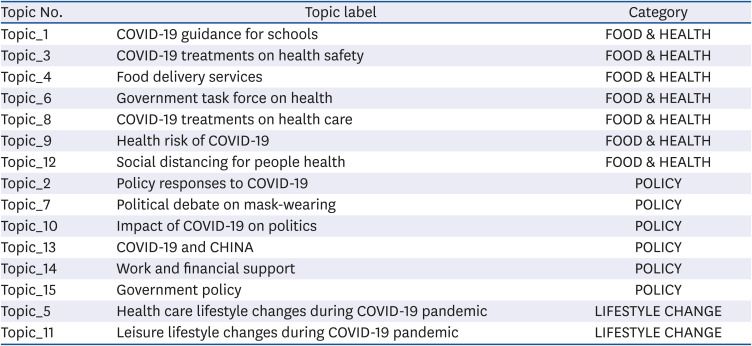




 PDF
PDF Citation
Citation Print
Print



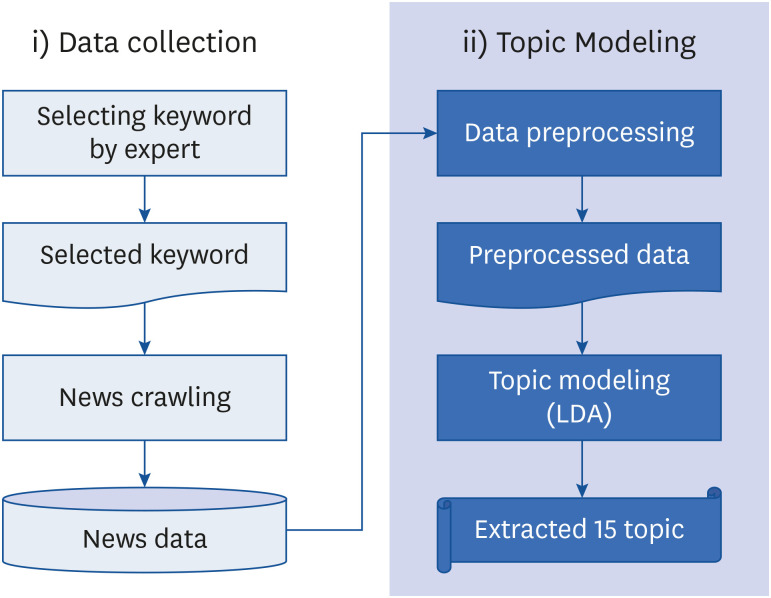
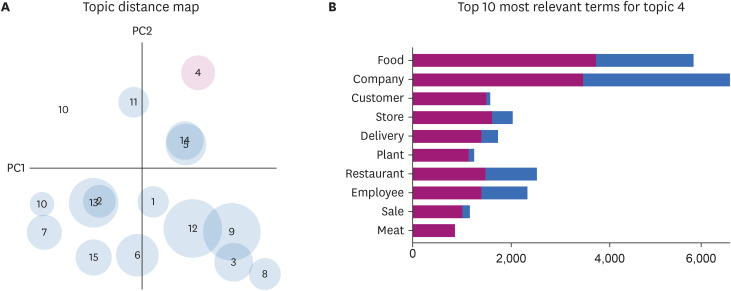
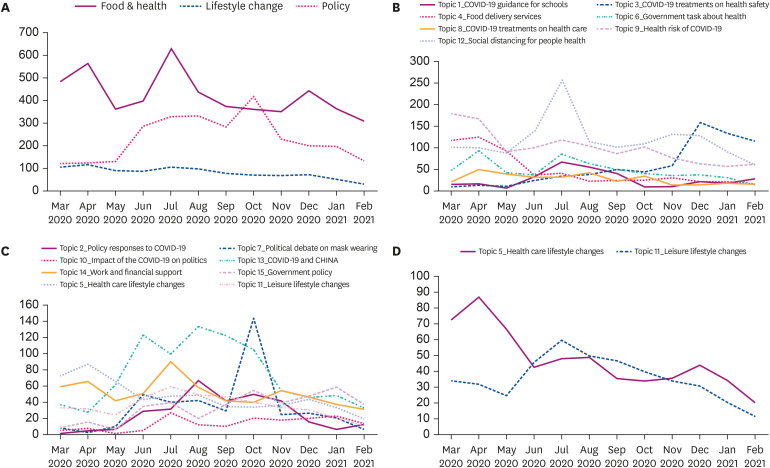

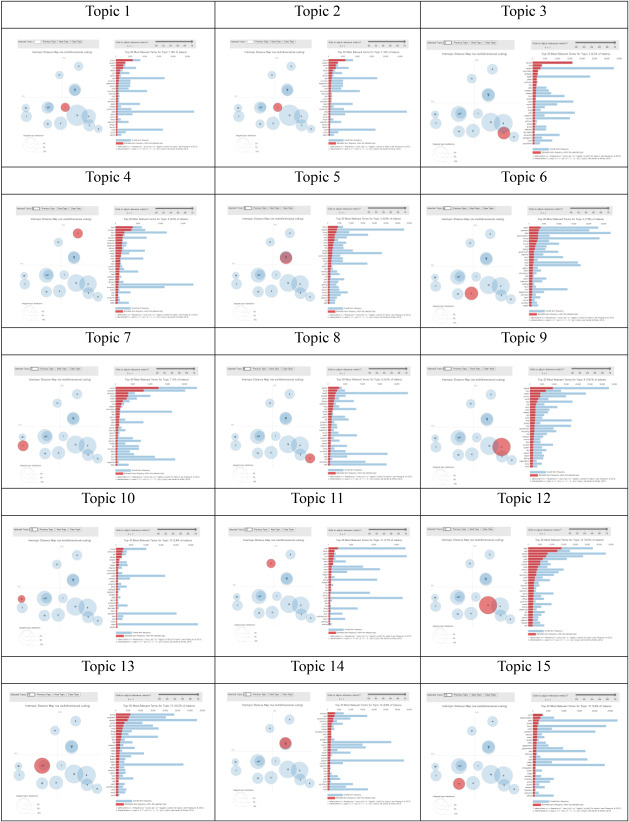
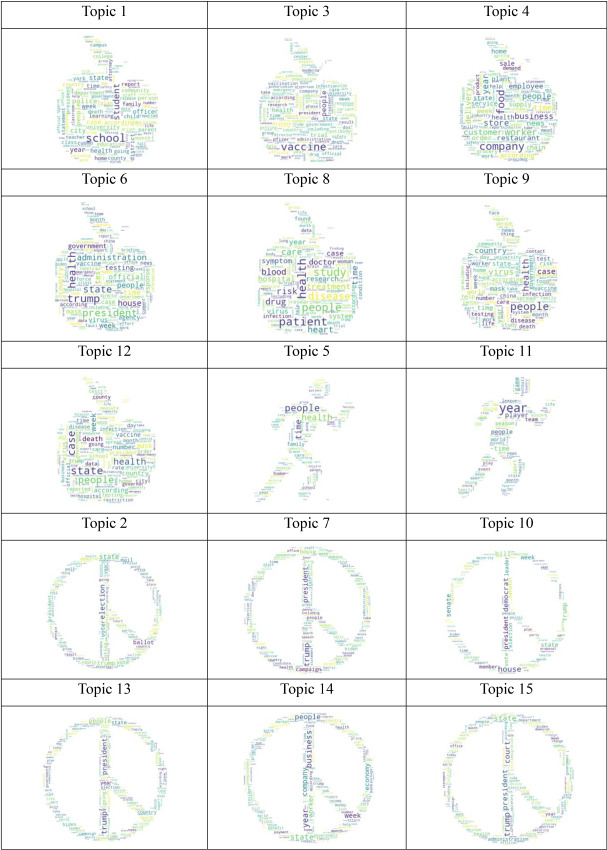
 XML Download
XML Download